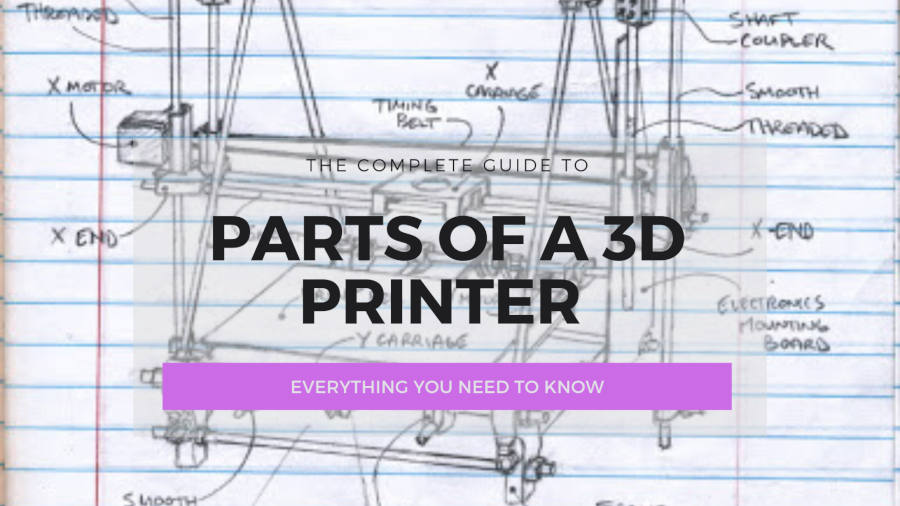
3D printers can be daunting to those untrained in the engineering of complex machines. The calibration and leveling, extruder, and many different parts of a 3D printer can intimidate beginners. We wrote this guide to explain the different 3D printer parts, their uses, and unmask the myth that 3D printers are overly complicated.
Each 3D printer component is briefly described, as well as any brief advice we have regarding best use of the 3D printer, for quality, reliability or any other advantage. We have also included components of 3D printers that we recommend as high quality and durable.
Most of this guide focuses on standard FDM 3D printers, but we have also included summaries of the differences in delta 3D printers and in resin 3D printers.
3D Printer Parts Section 1: Parts directly involved in printing
Extruder
The 3D printer extruder is where all the inner workings of the printing process happen. The extruder consists of many smaller pieces, encompassing the cold end and the hot end. We describe the hot end separately as in some cases the cold and hot end are placed in separate parts of the 3D printer.
Some extruder 3D printer parts we recommend:
| Name | Price | Best place to buy: |
|---|---|---|
| E3D V6 | $61 | Amazon here |
| E3D Lite6 | $37 | Amazon here |
| Micro Swiss MK10 All Metal Hot End | $63 | Amazon here |
| Diabase Flexion Single Extruder | $150 | Amazon here |
| Diabase Flexion Dual Extruder | $250 | Amazon here |
| E3D Titan Aero | $140 | Amazon here |
The extruder cold end guides filament towards the hot end, clamping and feeding it through to be melted and deposited on the print bed. It is made up of parts including:
- Filament drive gear: also known as a hobbed gear, the filament drive gear grips the filament and pushes it through to the hot end. It is an important part as low-quality gears can cause errors and clogs, which are a hassle to deal with.
- Idler gear: a wheel that pushes the filament up against the filament drive gear. It looks similar to the drive gear, and ensures that filament is tightly held in placed as it is pushed through the cold end so that there are no clogs. Most printers have a way to adjust the idler gear’s tension so it doesn’t squeeze filament too hard or too little.
- Feeder system: either a Bowden or a Direct Drive Extruder system:
Bowden extruders: Bowden extruders are set up so that the cold and hot ends are separate, with the cold end usually bolted to the side of the frame. This has advantages with the hot end being lighter and therefore able to travel faster with less mass and less chance of overshooting — so you can print faster. A PTFE tube is usually used to guide filament from the cold end to the hot end to be melted. Delta 3D printers are always set up with Bowden extruders.

Direct extruder: direct extruders have the cold end directly on top of the hot end, with filament traveling a shorter distance. Direct extruders are thought to be better for flexible filaments, though this isn’t always the case. There is also less traveling for the filament for any errors to occur during.
Dual extruders: some 3D printers have two extruders rather than one, known as a dual extruder system. This enables the printing of supports in water soluble materials like PLA that are far easier to remove, or printing with two different colors. Some dual extruder 3D printers, such as those by BCN3D, are independent dual extruder systems that can print two different objects simultaneously.
- We also have a separate, in-depth guide to 3D printer extruders.
- We also have a buyer’s guide for the best dual extruder 3D printers.
Hot end
The 3D printer hot end is where filament is melted to be deposited. For such a small part it has a huge impact on print quality, and investing in a good quality hot end always pays dividends.
- We also have a separate, in-depth article focused on 3D printer hot ends.
Depending on the material you want to print, you may need a stronger hot end made from metal, rather than a standard PEEK hot end. PEEK hot ends are typically useful up to around 230C, enough to print ABS and PLA, but not robust enough for tougher materials like PETG and Nylon. Metal hot ends however can handle much higher temperatures and are known for their reliability. They can also create prints with less oozing and a slightly crisper surface finish, and they are usually easier to clean.
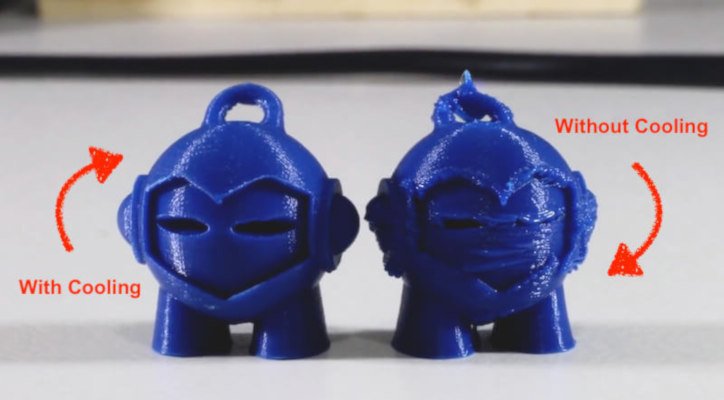
Parts of the hot end include:
- Heat sink: makes sure the filament doesn’t get melted before it reaches the nozzle, as this can cause jams, especially with PLA filament.
- Cooling fan: cools filament down once it is deposited onto the print bed so that the molten plastic solidifies quicker and keeps its shape better, avoiding the deformed, sloppy look. A fan is especially important for delicate overhangs and bridge structures, and makes edges more crisp. Parts printed without a fan start to look increasingly like the Pokémon Muk as gravity pulls the plastic out of its natural shape before it can harden.
- Heater block and cartridge: the parts responsible for heating up and melting filament.
- Thermistor: the sensor that monitors the heater block temperature.
- Nozzle: explained in more detail below.
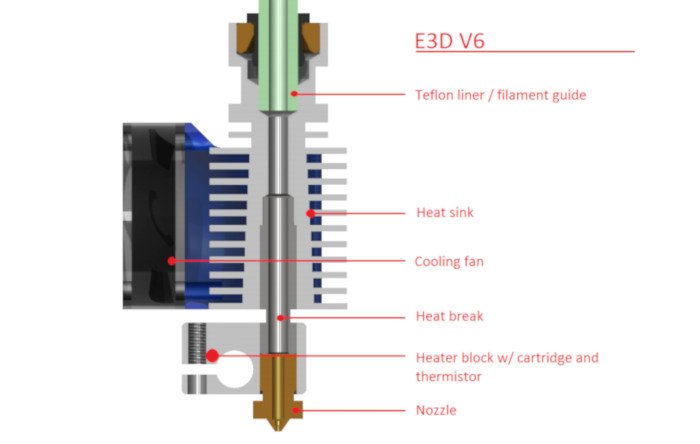
Nozzle
The 3D printer nozzle fits onto the end of the hot end, and is where filament is extruded from to reach the print bed and form the model. There are decisions to be made about which nozzle to use on your 3D printer, as print quality can vary dramatically based on your nozzle size.
Some nozzle 3D printer parts we recommend:
| 3D printer nozzle material | Where to buy | Price |
|---|---|---|
| Brass | Amazon here | $9 (for 24 nozzles) |
| Stainless Steel | Amazon here | $7 (for 5 nozzles) |
| Hardened Steel (by E3D) | Amazon here | $19 |
| Ruby-tipped (by Olsson Ruby) | Amazon here | $93 |
Smaller nozzles, such as those between 0.15mm and 0.4mm, are more precise and can print details with better accuracy than large nozzles. Larger 3D printer nozzles print much faster and more reliably, clogging far less often. If you are looking to print fine details, go small; but if you want speedy prints, go large.

Additionally, some metals make more durable nozzles than others. Standard nozzles are made from brass, and work with most normal filaments, but wear down quickly and need replacing fairly often. Stainless steel nozzles last longer, and hardened steel nozzles last even longer still. Some hardcore makers even go for ruby-tipped nozzles for printing abrasive materials.
- We also have a separate, in-depth article focused on 3D printer nozzles.
- For nozzle size: 3D printer nozzle size comparison
Print Bed
The print bed is the surface that filament is deposited on to create the finished part. Most print beds nowadays are heated, allowing for the printing of tougher filaments such as ABS, PETG and PC. A non-heated print bed, such as those found on the Dremel 3D20 and some other affordable 3D printers, limit you to just PLA and TPU printing.
Heated print beds are important to prevent warping during printing, as the heat on the bed stops the plastic cooling too quickly, which can lead to warping.
Print beds are most commonly made from sheets of glass, though aluminium is also used. Some build plates are built to be flexible, making it easier to remove prints. Overall, glass print bed are considered easier to maintain and flatter.
Increasingly, 3D printer print beds can auto-level without much manual interference. This is important, as if the print bed is incorrectly positioned, print quality can be greatly affected. Some 3D printers use compensating leveling, whereas some require manual leveling by adjusting the bed by manually turning the screws in the bed.
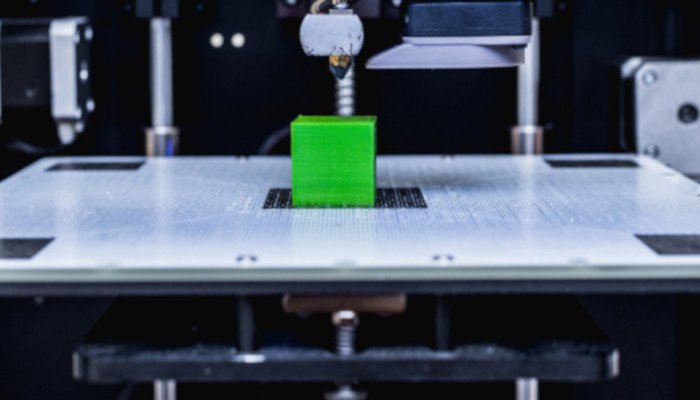
Print beds on Cartesian 3D printers are either square or rectangular, depending on the printer’s build volume. Build volume is simply the maximum size that the 3D printer can print, and is specified in terms of the XYZ axes. For example, a Creality CR-10 can print 300 x 300 x 400 mm, meaning it can print up to 300 mm sizes on the X- and Y-axes, and 400 mm height. Delta 3D printers have circular print beds instead.
Print bed surface: surfaces are put on the print bed to help prints stick better and to make them easier to remove. They are key as the first layer of any print is deposited on this surface, before subsequent layers are deposited onto the first filament layer. An uneven first layer will affect every other layer, and the resulting part will not be as crisp and precise.
Different filaments work best with different solutions, and writing recommendations for every filament type would bloat this section. Some commonly used surfaces include builder’s tape, BuildTak surfaces, and PEI film.
3D Printer Parts Section 2: Parts involved in the backend / movement
Motion Systems
- Stepper Motor – usually a NEMA17 motor (though NEMA14, NEMA23 and NEMA24 motors are common), the stepper motor moves the extruder across coordinates in exact steps to accurately print. They are key to the printer’s mechanical movements as commanded by the controller board.
- Belts – the belts are responsible for accurate extruder movement across the X- and Y-axes. A 3D printer’s belts have a large impact on precision and the 3D printer’s speed. On delta 3D printers they work differently, controlling the Z-axis instead. Belts need to be kept at the right tightness – not too tight, but not too loose either – or printing quality can suffer.
- Threaded rods / leadscrew – Threaded rods control the Z-axis, whereas the belts control the X- and Y-axes. Threaded rods connect to the stepper motor, rotating to move the print head either up or down – though a few printers instead move the print bed. Some upgrade to leadscrews, which are better for smoother movement but cost extra.
- End stops – Ends stops function as a sensor so the 3D printer can identify where it is in relation to each axis, informing it when the end of the axis has been reached.

Controller board
Sometimes called a mainboard or motherboard, the controller board is the computer part of the 3D printer, sending commands to the parts of the 3D printer responsible for direction and movement, guiding them with coordinates based on the STL file to print.
The controller board is key to high quality printing, as inaccurate movement commands, no matter how precise the actual printing parts of the printer are, will lead to sloppy prints. A high quality mainboard sends pinpoint accurate commands to create parts with crisp surface finishes.
Not only does it send movement information, the controller board also converts 3D printer models into these printing coordinates, and regulates the printer’s temperature. The extruder might physically print the filament, but the controller board is both the 3D printer’s heart and brain.
See also: Best 3D Printer Controller Boards

Power Supply Unit (PSU)
Fairly self-explanatory, the power supply unit supplies power to the printer so it can melt filament and print. More powerful PSUs are needed for higher temperatures and allow for better movement over longer periods of time. Less powerful PSUs usually restrict you to just PLA printing as they are not capable of maintaining the intensity required to precise printing of filaments like ABS, PETG and Nylon at higher temperatures.
Also make sure that you are buying a 3D printer with the correct voltage for your country.

3D Printers Parts Section 3: Parts involved in structure and interaction
Frame
Seen as an aesthetic, most do not realize how important a 3D printer’s frame is in determine part quality. A high quality frame greatly aids stability, anchoring the printer to the floor and preventing extraneous factors such as vibrations from disrupting print quality.
Nowadays frames are usually made from metals such as aluminium, but some are made from acrylic. The first FDM 3D printer kits, such as early Ultimaker printers, were made from wood. Increasingly, 3D printer kits are made from plastic frames that are actually printed by other 3D printers, especially with RepRap 3D printers.
A robust, durable and heavy frame is key to high quality prints with smooth surface finishes. Some printers come with an enclosed 3D printer frame, which keeps the hot parts such as the print bed and print head away from prying hands, as well as keeping the temperature more consistent during printing to helping reduce warping. They also keep dust out. Enclosed printers become increasingly helpful with tougher filaments.

Screen or Interface
Usually a touchscreen LCD screen, but some have rotating knobs such as on the Creality CR-10. These screens make it easier to use and navigate all the printer’s features, options and settings. Some printers can calibrate via this interface, with the colorful screens able to show you extra stats during printing on some printers, such as the estimated time left.
Some printers can also print over WiFi, removing the need for a USB stick or SD card, and allowing you to print remotely. Most desktop 3D printers still usually work by transferring models by USB or SD card, which is still simple and effective.
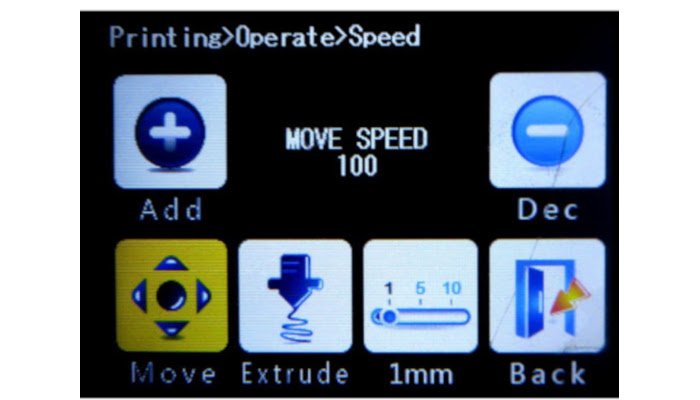
Filament
3D printer filaments are the materials melted and extruded to create parts on FDM 3D printers. Filaments come on circular spools and are guided through the extruder to the hot end to be melted and deposited in the right place through the nozzle.
Most 3D printers now use 1.75mm filament, but occasionally you may encounter a printer set up to use larger filament sizes.
Different filaments melt at different temperatures, and most filaments require a heated print bed for effective printing. Additionally, tougher filaments such as PETG and Nylon require higher quality metal hot ends for printing as higher temperatures are needed to melt them which PEEK hot ends cannot handle.
- We explain all the different filament types in our separate 3D printer filament guide.
- For ABS, we have a specialized guide to ABS filament.
- For PLA, we have a specialized guide to PLA filament.
- For PETG, we have a specialized guide to PETG filament.
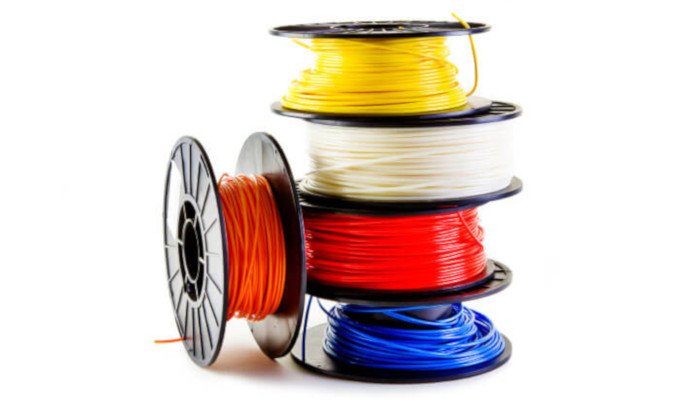
Part 4: Extra Delta 3D Printer Parts
Instead of stepper motors, delta 3D printers use effectors for movement. These effectors control the three arms that move the extruder into the correct place for printing. These three arms meet in the center and conect to the extruder, allowing them to move the extruder in any direction across the three axes to deposit filament.
3D Printers Parts Section 5: Resin 3D printer parts
The main parts of a resin 3D printer vary based on the type (LCD vs SLA vs DLP), but include:
- Resin vat: also known as a resin tank, contains the resin to be cured
- Light source: either an LCD, DLP projector or SLA UV light source
- Build platform: where the solid object is formed, and moves up or down when each layer is finished
- Resin: variety of types, such as daylight-sensitive, castable, UV resins
- Roller: some resin printers have a roller that moves across the built platform to make sure resin is sat properly.




